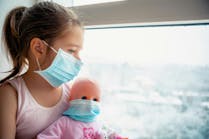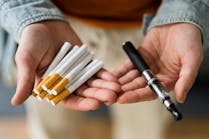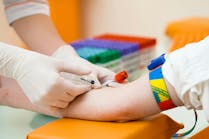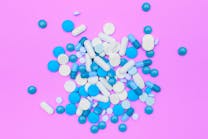Editor’s note: Anthony Kurec, MS, H(ASCP)DLM, serves as Clinical Associate Professor, Emeritus, at SUNY Upstate Medical University in Syracuse, NY.
Q: When verifying thermometers in a small clinical lab, does the NIST thermometer that you use to verify the other thermometer have to be NIST-certified (bought with the accompanying calibration report), or is the generic traceability standard enough to meet CLIA guidelines?
A: Traceability refers to an unbroken chain of documented calibrations that have been compared to a National Institute of Standards and Technology (NIST) set standard.1 The NIST-certified thermometer was compared to a temperature device that was NIST-validated and deemed accurate, generally using a standard platinum resistance thermometer.2,3
A “traceable” thermometer is not necessarily calibrated against the NIST reference standard, but verified against a thermometer that can be traced back to a calibrated NIST-certified thermometer.2 This certified thermometer comes with a certificate validating its accuracy to one-tenth of the smallest division and includes an expiration date that indicates when the thermometer is to be recalibrated if it hasn’t already undergone revalidation. Certification of the NIST thermometer should be within the last five years.4
There are several types of thermometers including partial immersion, total immersion, liquid-in-glass filled, dial thermometers, and digital thermometers.2 Due to the toxicity of mercury-filled thermometers, many laboratories have phased them out. NIST is a resource often used to recalibrate thermometers and will not accept mercury-filled thermometers, as of 2011.5
Calibrated thermometers are used to accurately measure temperatures for various laboratory instruments and test systems, such as refrigerators, freezers, incubators, heating blocks, water baths, and environmental conditions. While CLIA does not directly address the calibration of thermometers, it does state that the laboratory must establish criteria for “accurate and reliable test system operation” and ensure proper storage of reagents and specimens that depends on maintaining appropriate temperature, humidity, and water quality.6
Thus, it is incumbent for any patient care facility performing laboratory tests to ensure, validate, and document temperature accuracy using a calibrated or traceable thermometer in order to meet CLIA guidelines.2,4,6,7 Each thermometer requires a unique identifier such as a serial number and should be validated at least annually, as the manufacturer indicates, or if local regulations mandate differently.
Upon annual inspection, each thermometer should be carefully inspected for any physical defects, imperfections of liquid content, and uniform graduation.3 In general, a thermometer with a variance of less than 1oC must be documented and compensated for when in use.4 A variance greater than 1oC from the reference thermometer is considered a problem and should be replaced.1
References
(All URLs accessed November 24, 2015.)
- NIST. Physical Measurement Laboratory. Mercury thermometer alternatives. What is traceability? May 15, 2012. http://www.nist.gov/pml/mercury_traceability.cfm.
- North Carolina State Laboratory of Public Health. Laboratory thermometers. Technical Bulletin (2013) Vol. 4(3). http://slph.ncpublichealth.com/doc/TechBulletins/Vol4-Issue-3-Thermometers.pdf.
- U.S. Food and Drug Administration. Office of Regulatory Affairs. Volume II- Measurement traceability ORA-Lab.5.6. Version No. 1.3. Revised 11/16/2006. http://www.fda.gov/ScienceResearch/FieldScience/ucm171883.htm.
- Wisconsin Dept of Natural Resources. Maintenance on laboratory support equipment, Section 7. July 2008. http://dnr.wi.gov/regulations/labcert/documents/guidance/07equip-suppt.pdf .
- Thermodynamics quantities. Laboratory and industrial-grade thermometers. National Institute of Standards and Technology. 2015. http://www.nist.gov/calibrations/laboratory_thermometers.cfm .
- Clinical Laboratory Improvement Amendments (CLIA). State Operations Manual, Appendix C – Survey Procedures and Interpretive Guidelines for Laboratories and Laboratory Services (Rev. 140, Issued 05-29-15). https://www.cms.gov/Regulations-and-Guidance/Legislation/CLIA/Downloads/App-C_Survey-Procedures-IGs-for-Labs-Labs-Svcs-Final.pdf.
- Wise JA. A procedure for the effective recalibration of liquid-in-glass thermometers. NIST Special Publication 819. August 1991. http://www.nist.gov/calibrations/upload/sp819.pdf.
Q: When placing pipettes in a pipette washer/dryer, should the tips be up or down?
A: Interestingly, some pipette washing protocols suggest placing the pipette tips down,1-5 while others suggest tips up.6-8 In reviewing these protocols, no explanation is offered in support of preference position and its potential efficacy in cleaning pipettes.
However, it would seem that the interior of the tip, being of smaller dimension than the rest of the pipette, would be the most difficult area to clean. In following this logic, the pipette should be placed in such a position as to maximize the amount of wash solution passing through it. Thus, completely submerging a pipette (in a pre-soak bucket) with the tip up and the larger bore of the pipette facing down would appear to provide greater internal access to the cleaning fluid when placed in the bucket.
Likewise, when placed in an automatic washer with the jet stream above the pipette, tips should be facing down, thus again making the larger opening of the pipette more accessible. In addition, the jetted wash fluid streaming through the pipette from a larger opening to a smaller one (similar to a garden hose) would place greater force on the fluid at the tip, thus ensuring maximum cleansing pressure.
Refrences
(All URLs accessed December 2, 2015.)
- Bellco. Cleaning of pipettes. http://www.bellcoglass.com/sites/default/files/kcfinder/files/Cleaning%20Glass%20Pipettes.pdf.
- Sigma-Aldrich. Suggestive cleaning of glassware. https://www.sigmaaldrich.com/content/dam/sigma-aldrich/docs/Aldrich/Bulletin/al_techbull_al228.pdf.
- Miele. Effective cleaning of pipettes. www.labmanager.com/news/2012/12/effective-cleaning-of-pipettes?fw1pk=2#.U7AIM7EcwvA.
- Corning. Care and safe handling of laboratory glassware. http://osum.ucr.ac.cr/sites/default/files/documentos/CUIDADO%20Y%20SEGURIDAD%20PARA%20MANEJO%20%20DE%20CRISTALERIA.pdf.
- Gate I. Caring and cleaning lab glassware. June 2011. http://labprotocolsonline.blogspot.com/2011/06/caring-and-cleaning-lab-glassware.html.
- United Clinical Laboratories, Iowa. http://webserver.pa-ucl.com/wwwdocs/instrv/MFV.htm.
UCLA. Pipette washing instructions. http://www.chem.ucla.edu/dept/Faculty/merchant/pdf/Pipettewashinginstructions.pdf.





